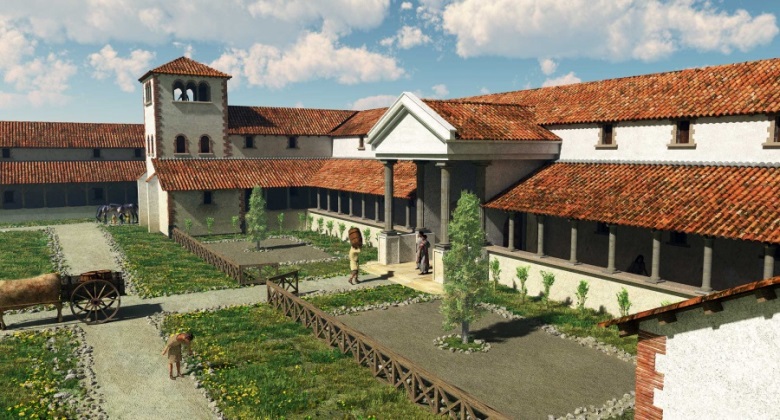The Roman Villa Rustica

Country villas played a very important role in the lifestyle of noble Roman families in antiquity. The escape from hot, overcrowded and polluted cities has always been something the wealthy have aspired to, even in Roman times. The landscape of the countryside in the classical Roman world was scattered with rustic villas, some of which became the embrios of later settlements and sometimes Christian structures. Many a monastery, like the beautiful Abbey in Farfa, has been founded on the remains of a Roman country home.
Villae rusticae were the core of a latifondum, a large extension of farmed land belonging to a noble family, as well as a place for holidays, a place for otium and negotium, that is leisure time dedicated to erudition, poetry, meditation and business & politics.
We have many historical documents describing ancient villas as well as a wealth of archaeological evidence.
Roman stoic philosopher, politician and tutor of Emperor Nero, Lucius Anneus Seneca, described his stay at the Villa of Scipio Africanus in Liternum in his letter to his friend Lucilio, speaking of its austere appearance and the lack of comforts compared to other luxurious villas of his time. Seneca spoke of the small bathroom and spartan rooms compared to the sophisticated luxury homes of his era, 250 years later. Today there is a town, called Villa Literno, build over the remains of Scipio’s home.
Pliny the Younger in his letter to Gallo provides a detailed description of his marvellous villa in Laurentum near Ostia, with porticos that provided shelter when the weather was bad, pools in the frigidarium (the cold section of the Roman Baths) large enough to swim in, and the calidarium, a hot water pool with a spectacular view of the sea.
Remains of Roman villas are scattered all over Europe. The most famous example in Italy is Villa del Casale in Piazza Armerina, Sicily. The archaeological site of Villa del Casale is a cherished open air museum of incredible Roman mosaics, including a famous scene of women exercising in “bikinis”. Sabina, due to the areas beautiful landscapes and proximity to Rome, was a privileged escape for patricii (nobles), as seen by the existence of many villa ruins in the area.
Certainly the idea of a country estate continued beyond the Roman world and gained popularity again during the Renaissance, when emphasis was placed on classically inspired architecture. We have astounding examples in Tuscany with the Medicean villas, built by members of the famous Medici family, such as Lorenzo il Magnifico, Botticelli and Michelangelo’s patron. Vaguely recalling castles, these Tuscan treasures were designed by architects like Giuliano da Sangallo who also worked with pope Julius II in Rome. In the 16th century the Palladian villas in the Veneto area, near Venice, Padua and Vicenza, were built by noble land owners, many of them Venetian. These were often working farms with beautifully crafted buildings dedicated to glamorous banquets and parties to which philosphers, musicians and Cardinals mingled with courtesans, artists and kings.
Today, country villas once again represent a relaxing escape from the summer heat and the frenetic life in modern cities, and a return to an ancient world where meditation, the contemplation of nature and pleasure still live in harmony and balance.
You must be logged in to post a comment.